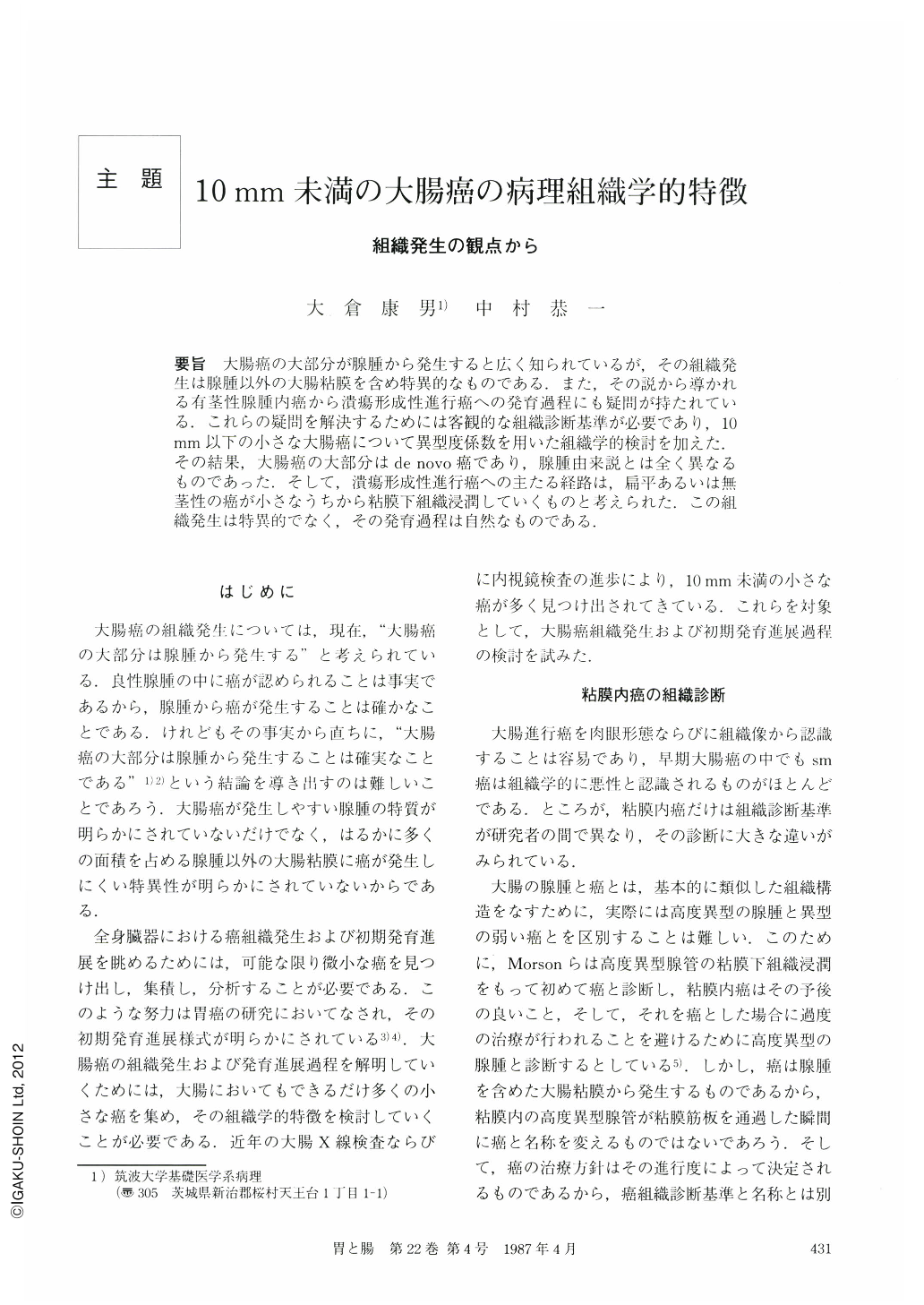Japanese
English
- 有料閲覧
- Abstract 文献概要
- 1ページ目 Look Inside
- サイト内被引用 Cited by
要旨 大腸癌の大部分が腺腫から発生すると広く知られているが,その組織発生は腺腫以外の大腸粘膜を含め特異的なものである.また,その説から導かれる有茎性腺腫内癌から潰瘍形成性進行癌への発育過程にも疑問が持たれている.これらの疑問を解決するためには客観的な組織診断基準が必要であり,10mm以下の小さな大腸癌について異型度係数を用いた組織学的検討を加えた.その結果,大腸癌の大部分はde novo癌であり,腺腫由来説とは全く異なるものであった.そして,潰瘍形成性進行癌への主たる経路は,扁平あるいは無茎性の癌が小さなうちから粘膜下組織浸潤していくものと考えられた.この組織発生は特異的でなく,その発育過程は自然なものである.
It has been a widely accepted idea that the great majority of colorectal carcinomas arises from adenoma. Several questions regarding the histogenesis of the colorectal carcinoma, however, come up when the developmental and evolutional processes are closely examined. Carcinoma cells in general develop from a mitotic zone of the epithelium in any organ. There are mitotic zones at the bottoms of the epithelial crypts of the intestinal system. Nevertheless, why does de novo carcinoma scarecely develop in the colorectal region? Many pedunculated adenomatous polyps and ulcerative carcinomas have been observed in practice. In spite of that, why do we rarely observe the pathological process intermediate between pedunculated polyp and ulcerative carcinoma (missing link)?
Sixty-seven cases of colorectal carcinomas smaller than 10 mm in diameter were studied with respect to the histogenesis and macroscopic figures using indices of atypical grades (ISA and ING). Fifty-five (82%) out of 67 cases did not possess adenomatous components (de novo carcinomas) histologically. Out of these 55 de novo carcinomas 39 cases (71%) showed flat protrusions without stalk macroscopically. On the other hand, out of 12 carcinomas with adenomatous components 10 cases (83%) showed pedunculated polyps macroscopically. Submucosal infiltration was observed in 15 cases (27%) in the de novo carcinoma group and in 2 cases (17%) in the adenomatous carcinoma group. With respect to the macroscopic types, submucosal invasion occurred in 15 cases out of 41 flat protrusions (37%) and in 2 out of 26 pedunculated polyps (8%).
Thus, it may be concluded that about 80% of the colorectal carcinoma arises directly from the flat mucosa not by way of adenoma. The similar study on the carcinomas measuring 1 to 3 cm in diameter has also demonstrated the same tendency. Most of the de novo carcinomas were flat protrusions macroscopically, have the tendency of submucosal infiltration and measure approximately 1 cm in diameter. Therefore, there is no missing link in the evolutional process of the colorectal carcinoma with the carcinoma cells developing from the flat mucosa.

Copyright © 1987, Igaku-Shoin Ltd. All rights reserved.


